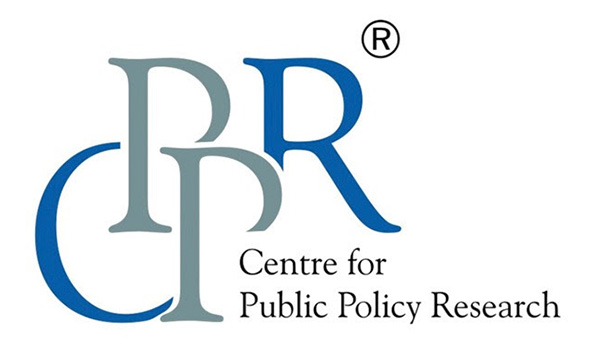Articles

COVID-19 and other pandemics in history: Lessons and findings
July 19, 2021
Introduction to Data Driven Policy Making | July 24- 25 | Course Instructor- Ajit Mani
July 20, 2021What a mid-pandemic reshuffle has in its fold ?

It had been quite a while that the hints of a cabinet reshuffle of the second Narendra Modi government were going round in the national political circles, and what we witnessed is a massive overhaul of his cabinet by the Prime Minister. While the resignation of Dr. Harsh Vardhan, Ravi Shankar Prasad, Prakash Javadekar and Ramesh Pokhriyal ‘Nishank’, all party heavyweights, came in as surprise, what seems to be interesting in this mid-pandemic shuffle is the kind of inclusivity it possesses and the political message that it propels. As the number of ministers increased from 58 to 77 after the rejig, what unraveled was the BJP’s political strategy for the elections to come.
The induction of 7 leaders from the state of Uttar Pradesh, which makes it a total of 14 ministers from the state, underscores how crucial the upcoming UP state elections is to the BJP. Further to that, the inclusion of 3 MPs from Gujarat, 4 from West Bengal, one each from Assam, Tripura and Manipur to the ministry reveals a wider political project that BJP is planning to execute. With 27 ministers from Other Backward Classes (OBC), 12 from Scheduled Castes, 8 from Scheduled Tribes, 5 from other minority religions (Christian, Sikh and Budhist) and 11 women ministers, the BJP’s political machinery is trying to redraw some caste and community equations in these states. Considering the case of Uttar Pradesh, where the BJP will be fighting for a second term, the strategy seems to attract non-Jatav Dalits and non-Yadav OBCs to their fold by making sure that the communities like Kurmi (a prominent non-Yadav OBC) and Pasi (a prominent non-Jatav dalit group) has representation in the government. Even though the Yogi Adityanath government has faced severe criticism over the mishandling of the pandemic and the curious case of floating dead bodies in the rivers, the BJP is still in a position to buck the anti-incumbency with the two major opposition parties, the SP (Samajwadi Party) and the BSP (Bahujan Samajwadi Party), and is in no mood for a pre poll alliance.
With the setback faced in the assembly elections of West Bengal, Kerala and Tamil Nadu along with a dent in the image of the Union Government for the hiccups during the initial part of the COVID second wave, the BJP is now in its way to stretch its massive political arms to make inroads into more communities and castes other than their traditional vote banks in the wake of the upcoming state assembly elections especially in UP and Uttarakhand. The inclusion of Mansukh Mandavia and Parshottam Rupala (from Gujarat) is a direct attempt to woo the influential Patidar community and the inclusion of 4 ministers from Maharashtra including a former Congress Chief Minister, Narayan Rane makes it clear that the BJP central leadership is well aware of the possible potholes on the road leading to 2024 and is working towards sealing those gaps. One could easily stitch all these pieces together to get a clear view of the grand plan that the ruling party is envisaging for the Lok Sabha elections that is due after 3 years.
The focus that BJP gives on building a second generation of leaders is also something that the opposition parties should take note of and try to follow as the reshuffle has reduced the average age of the Council of ministers to 58 from 61. This move also pushes a strong message down the party ranks that nobody irrespective of their status in the party will be able hold on to any position for more than a particular period of time and there will be enough space for the youngsters in the party to build their own political careers. A careful look at the Indian political history shows us that the failure of the Congress as a national alternative to BJP has its underpinning in their negligence in effectively implementing a timely generation shift. A tendency to include ex-bureaucrats to the ministry is being continued even in this expansion which was always been a part of Modi’s cabinet plans which he seems to believe improves the system efficiency.
As the Bharatiya Janata Party specifically makes their intention clear and draws a clear path towards the state elections in the near future and the 2024 Lok Sabha elections, the opposition parties in the respective states and at the national level have got a tough task in hand to prove their mettle. With Aam Aadmi Party (AAP) and AIMIM (All India Majlis-e-Ittehadul Muslimeen) entering into the electoral fray of the Hindi heartland, the possibilities for a split in the opposition votes are getting higher which makes the fight a bit easier for Modi and team. The only possible option in front of the opposition parties is to spin together an effective pre poll alliance well before the elections and to have an effective strategy to take on one of the most efficient election machineries available in the country.
Views expressed by the author are personal and need not reflect or represent the views of Centre for Public Policy Research.
Goutham K A is Project Associate at CPPR. He is a Computer Science and Engineering graduate from Government Engineering College, Thrissur and currently pursuing post-graduation in Political Science and International Relations from Indira Gandhi National Open University. Goutham is a frequent traveller, photography enthusiast and interested in regional, national and international political developments.

